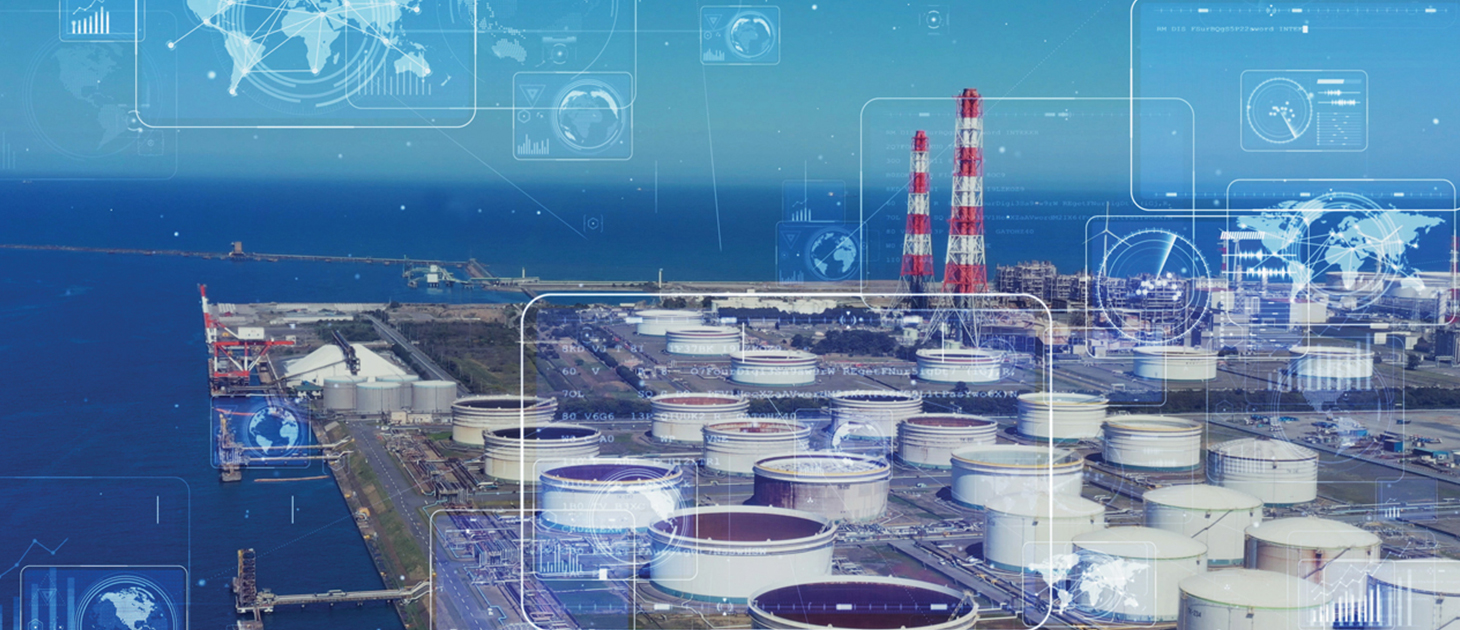Market Volatility Fuels Data Innovation in the Energy Sector
Oil markets have begun to recover after a price collapse earlier this year, but more energy companies are embracing new data technologies to make up for losses.

This article originally appeared in the July/August 2020 issue of Middle Market Growth.
The oil and gas industry has lagged behind other sectors in developing tools for data collection and analysis, but market volatility and declining crude prices are pushing energy companies to look for technological solutions.
As recently as 10 years ago, the industry operated with about as much sophistication as it had in the previous century. Teams of engineers and technicians working out in the field would record estimates of well-production volume by hand—in what industry-insiders call a “greasebook”— and relay information to a central location by phone.
For a large portion of the industry, that’s still the case. Cellphone service remains virtually nonexistent in many remote drilling locations, prompting some workers to report figures by pay phone, according to a story from the Houston Chronicle in November 2019.
“The oil and gas industry is one of the slowest sectors to leverage data science and advanced analytics,” says Andrew Gillick, a managing director at RS Energy Group, a company that provides data analytics solutions and services to the energy industry. “Some geologists still practically use graph paper and an abacus to decide where to drill a well.”
The industry’s aversion to keeping up with even modest data recording advancements was driven in part by immense profit margins. That complacency may be coming to an end.
In March, demand for oil shrunk due to the COVID-19 pandemic, while supply surged after negotiations fell apart between Russia and the members of the Organization of the Petroleum Exporting Countries over production cuts. Together, the developments led to a historic collapse in the price of crude, with commodity traders offering to pay buyers to take oil off their hands for a brief period in April.
“The oil and gas industry is one of the slowest sectors to leverage data science and advanced analytics. Some geologists still practically use graph paper and an abacus to decide where to drill a well.”
Andrew Gillick
Managing Director, RS Energy Group
Oil markets have begun to recover since then, but prices are expected to remain at all-time lows. And with a recession now underway in the U.S., more energy companies are embracing new data technologies.
Some energy subsectors like shale, which relies on an extraction technique called hydraulic fracturing—or fracking—require a higher level of technical sophistication not seen in the wider industry, and set a promising precedent for innovation, including around data analytics.
According to a report released by Microsoft and Accenture in February, 50% of respondents in the oil and gas industry surveyed before the COVID-19 outbreak said they plan to invest in big data and analytics in the next three to five years, up from 46% in 2017.
Extracting insights from geophysical data, drilling logs, production rates and operational parameters like drilling speeds can help company managers make more accurate decisions and operate their businesses more efficiently. According to a report from Bain & Company, data analytics could increase fuel production by between 6% and 8%.
Large oil and gas companies have moved fastest to improve their data collection and analysis capabilities. Chevron developed its Digital Oil Field System, which includes real-time well and facility surveillance and production tracking. Its competitor Royal Dutch Shell employs about 70 people in a data analytics department, along with hundreds of contractors worldwide.
Yet many of the 24,000 other oil and gas producers don’t have the manpower or resources to set up their own data analytics teams. Some are turning to the growing number of data services firms, like RS Energy Group, that offer an alternative to in-house expertise.
RS Energy Group provides a wide array of data analytics tools, including machine learning algorithms and geological models for oil and gas companies and investors to evaluate their operations, follow M&A activity and survey the energy market.
RS Energy Group was recently purchased by another data services provider, Enverus, in February. Both companies have reported a dramatic increase in client activity as investors and operators look to use data analytics tools and services in the wake of the oil sell-off and coronavirus demand crunch.
Many energy companies are also tapping into artificial intelligence and machine learning to manage back office systems, flag fraud and billing errors, and help companies convert to paperless workplaces.
Another way to benefit from data is through predictive analytics. Data collected from sensors fitted to machines can be analyzed to prevent damage and breakdowns, reducing repair costs and downtime. Cognite, an industrial data company based in Norway, offers a product called Cognite Data Fusion that gathers data to monitor parts used for drilling, pumping and refining. It can identify needed repairs before those components break down.
Cognite is implementing 3D modeling, robotics and photogrammetry— extracting spatial information from photographs—to make work processes more efficient and safer. In February, the company partnered with Norwegian oil and gas company Aker BP to explore the use of robotics systems. It will deploy Spot, the four-legged robotic dog that Boston Dynamics designed for managing remote operations and autonomous sensing across multiple industries.
Francois Laborie, Cognite’s president of North American operations, expects energy companies in the future to use robots to collect production data remotely.
Harnessing existing data that was difficult to access is merely the first step for the oil and gas industry. Laborie predicts the next phase of data innovation will involve collection systems that operate without human intervention, known as “autonomous data,” to offer even greater insights for oil and gas operators.
“The next generation of systems will be about analyzing and optimizing the full asset or ecosystem,” Laborie says. “The insights provided on the operations open a huge range of opportunities, from safety to optimization and, of course, asset performance management.”

Benjamin Glick is Middle Market Growth’s associate editor.


